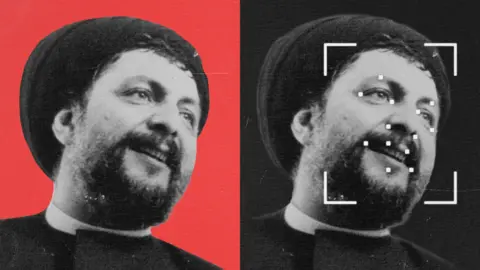A recent investigation delving into the life and mysterious disappearance of Musa al-Sadr, the influential Shia cleric who vanished in Libya in 1978, reveals possible new evidence that could finally solve a decades-old intrigue. The case has haunted both Lebanon and the Shia community worldwide, where al-Sadr is revered for his advocacy and leadership.
Research led by computer scientist Professor Hassan Ugail from Bradford University has utilized advanced facial recognition technology to analyze a digitized image of a body found in a Libyan mortuary. The body, approximated to have died around the same time as al-Sadr's disappearance, has sparked considerable debate given the cleric's continuing legend and the differing narratives of his fate.
Al-Sadr's disappearance occurred shortly before a critical period in Middle Eastern history, influencing not only the politics of Lebanon but also the course of the Iranian Revolution. His followers viewed his absence as akin to that of the Twelver Muslims’ “hidden Imam,” fostering a pervasive belief that he might still be alive.
Evidence gathered thus far suggests that the body in question may actually be that of al-Sadr. The body features similarities to al-Sadr, including height and physical characteristics, and preliminary results from the facial recognition software have scored well, indicating a high probability of identity. However, doubts remain, particularly from his family, who argue that the body does not resemble al-Sadr.
This investigation not only revisits a pivotal moment in Middle Eastern history but also profoundly affects ongoing discussions surrounding Shia identity and political power in Lebanon today. The question of al-Sadr's fate continues to unify his followers, making the quest for truth about his legacy as compelling as ever.

















